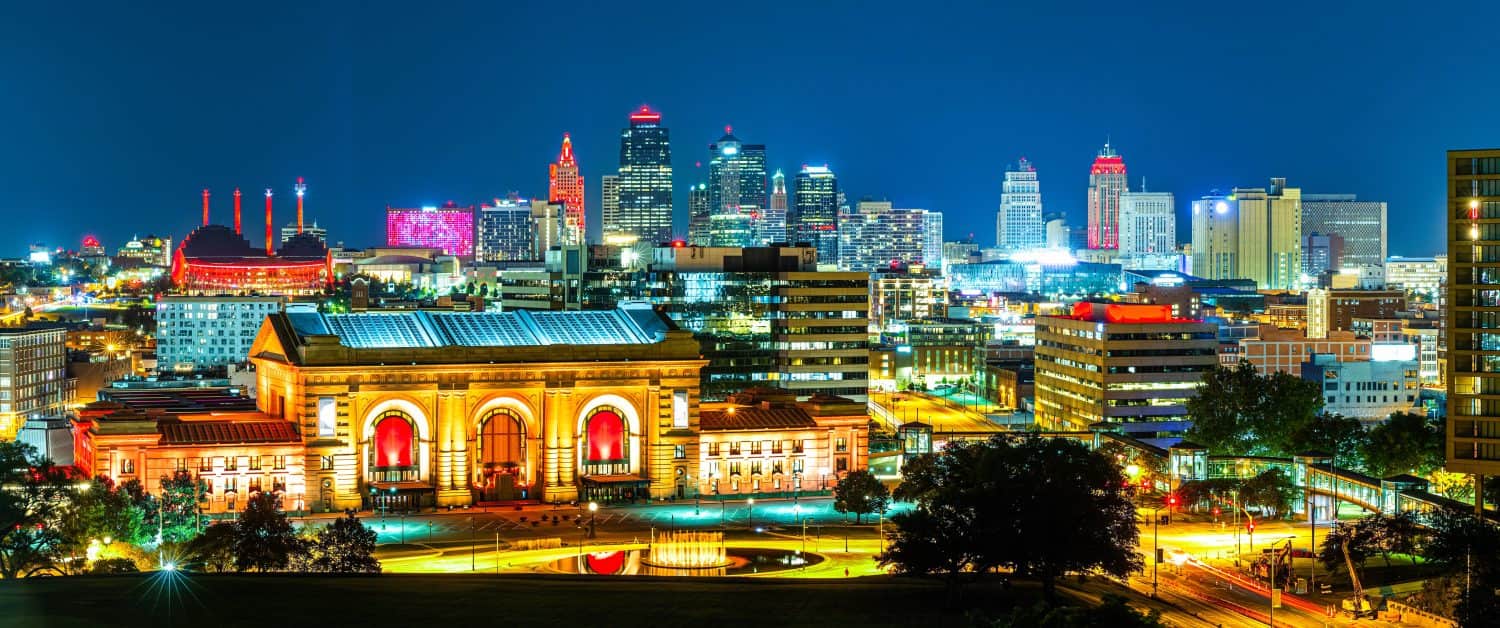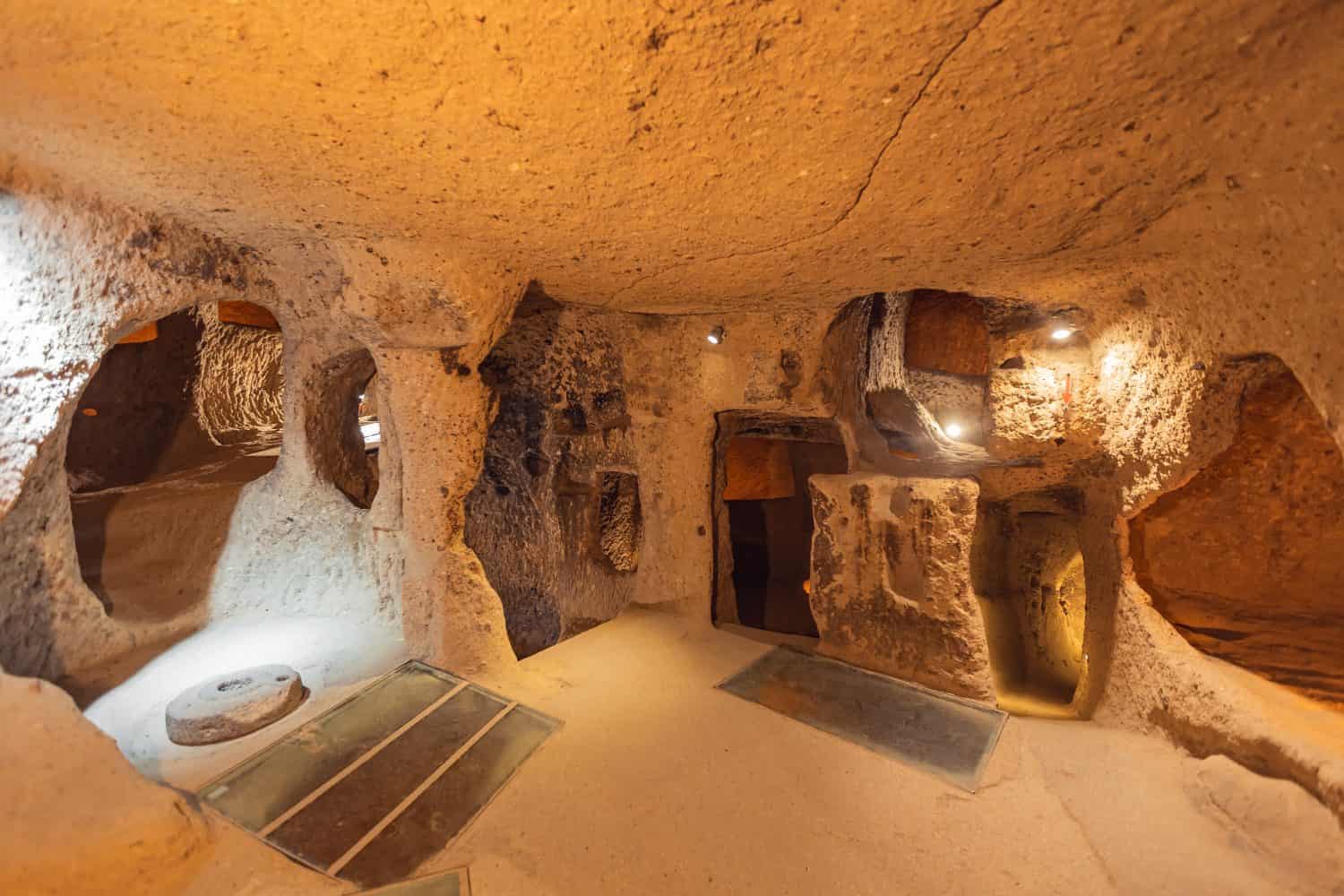From Dubai to New York to Paris to Hong Kong, our planet is home to many amazing cities. They spiral into the sky with gleaming glass, stone, and steel towers. Millions crowd their streets, eating, playing, shopping, living. But if you look a little deeper — actually a lot deeper — you will find something beyond incredible. There’s a whole world beneath our feet.
To be more specific, Earth is honeycombed with underground cities. In these earthen burgs, people live, love, eat, and sometimes die. Living underground is not uncommon. In ancient times, people went troglodyte to escape the vagaries of the weather or as a form of protection.
Many of these cities were carved out of rock or constructed under the earth. For instance, most of the Italian city of Naples sits on enormous caves that served up the raw materials on which workers built the original city. These caves, tunnels, and catacombs formed a vibrant underground city and were even used as safe havens to escape aerial bombs during World War II.

Underground in Naples, Italy.
©Emanuele Longo/Shutterstock.com
Why Underground Cities?
The reasons people live, or have lived, underground are myriad. If societies could not build homes, they simply went into the countryside to dig them, or they crawled into caves and chiseled out living space. People moved underground to stay cool in the summer and warm in the winter. If an enemy was looking for you, the underground is generally the safest place. During the Cold War, for instance, the Chinese and Russians dug below-ground cities to escape nuclear disaster.
Yet, these subterranean abodes are not an aberration of our past. Many of us still live or work in buried cities; if some experts are right, more will follow. In fact, Shanghai, with a population of nearly 25 million, is expected in the coming years to grow even more. As a result, officials have been looking at ways to develop underground.
It’s already happening in Kansas City, of all places, where a subterranean town is slowly taking shape. In fact, 10 percent of the city’s commercial real estate lies under the ground in a 270-million-year-old limestone mine. In that sediment, workers built the world’s largest underground business office complex—SubTropolis. It’s located 10 minutes from downtown. The city even boasts an underground paintball area. Let’s look at 5 underground cities that people don’t know about.

Ten percent of Kansas City’s commercial properties are located underground.
©Mihai_Andritoiu/Shutterstock.com
1. Cappadocia, Turkey
The ancients who lived in the underground cities of Cappadocia in modern-day Turkey went below ground as a form of protection against their enemies. The region’s landscape is notched out of volcanic rock and is home to the cities of Özkonak, Derinkuyu, and Kaymakli. Experts say that 20,000 people once lived in Derinkuyu, linked to Kaymakli by a 5-mile underground tunnel.
The people who dug Derinkuyu and the others did so because they feared for their lives. The region was strategic and, as a consequence, was constantly under attack. Residents fled below ground, where they stayed for weeks at a time.
In Derinkuyu, the largest of the cities, workers dug wells and holes to the surface so they could breathe fresh air. They rolled ginormous stones in front of the city’s entrance to keep the invaders at bay. Derinkuyu dates back to the 700s B.C.E. It was 18 stories high and had schools, a winery, and a bathhouse. Who built this vast, labyrinthine complex? Scientists speculate it could have been the Hittites or the Phrygians. Regardless, the city grew as the centuries passed. Christians from the Byzantine Era (330 A.D. to 1433) also lived there, creating frescoes and churches.

A portion of the underground city of Derinkuyu, Turkey.
©Parilov/Shutterstock.com
2. Montreal, Canada
Underneath the streets of this grand and historic city lies a subterranean city of 4.6 square miles linked by 20 miles of tunnels. Known as Reso (in French, reseau means ‘network’), the city within a city is home to hotels, restaurants, nightclubs, a library, and cinemas.
Work on RESO began in 1962 and slowly expanded as the years progressed. The idea was to reduce traffic above the ground while giving people a way to enjoy themselves without going outside in the winter. Anyone who has spent any time in Montreal during the winter knows how cold it can get.
To the uninitiated, RESO may look like a huge underground shopping mall. While there is some truth to that, art galleries and other artistic venues have opened in recent years. Going deep in Montreal is extremely easy. There are nearly 200 access points that include Metro stations and even entrances located in above-ground museums.

Complexe Desjardins is one of the gateways to Montreal’s underground city.
©Daderot, CC0, via Wikimedia Commons – Original
3. Beijing, China
Beijing is the capital of China, and during the Cold War, it is safe to assume there was more than one nuclear missile pointed in its direction by the Soviet Union. During this time of tension with the Soviets, Mao Zedong, the communist leader of China, told his countryfolk to “dig deep tunnels, store food, and prepare for war.”
That’s exactly what happened.
In 1969, some 300,000 workers began shoveling out 30.12 square miles of rock and dirt to make way for a bomb shelter below Beijing. They finished work a decade later. When workers removed the last wheelbarrow of dirt, the underground city became home to nuclear bunkers, factories, theaters, restaurants, and sports facilities. The idea was to make the city habitable in case those living above ground had to escape an attack.
The Chinese, during this period, ended up building some 20,000 bomb shelters. When Mao died, his successor, Den Xiaoping, decreed that these locations turn a profit. Many underwent an extreme makeover, complete with supermarkets, cinemas, and even roller-skating rinks.
Today, China and Beijing strain under the weight of overcrowding and expensive housing prices. About a million people live in Beijing’s not-so-hidden city, too poor to pay rent topside. Most want to earn enough to get an above-ground apartment. Many of these cave dwellers are migrants and young people, many of whom have traveled to the Chinese metropolis in search of a new life.
People call the complex Dixia Chen, or “The Dungeon.” Many of its residents have lived there for decades, although it is illegal. Government authorities say it is simply too dangerous. Still, those living there are known by the derogatory term “rat tribe.”

Underneath the gleaming city of Beijing lies the underground city known as “The Dungeon.”
©linlypu/Shutterstock.com
4. Burlington, England
The Chinese weren’t the only ones worried about nuclear destruction. Nearly 200 feet below the English countryside and encompassing some 35 acres, the British built a secret underground city known as Burlington. Workers excavated Burlington, located in the town of Corsham, in the 1950s to keep members of the British government safe in case of a nuclear attack.
The city had room for 4,000 officials and staff. They could stay safe for three months. Under the rock, workers built hospitals and communication centers, among other things. They even created a freshwater lake. Burlington was decommissioned in the early 2000s.

Below the quaint streets of Corsham, England, is a nuclear-era underground city that could accommodate 4,000 people.
©Enrico Della Pietra/Shutterstock.com
5. Coober Pedy, Australia
Opal is a brilliant gemstone composed of tiny globules of silica. When the light hits the gem, it can sparkle brilliantly in a rainbow of colors. In Southern Australia sits the town of Cooper Pedy, which likes to think of itself as the world’s opal mining capital. Although Australia’s Aboriginal people have inhabited the region for centuries, miners began moving to Coober Pedy in 1916 when opal deposits were discovered.
Mining is a hard job, even under the most auspicious of conditions. But in Southern Australia, it can get blistering hot in the summer and extremely cold in the winter. But underground, the temperature is a comfortable 73 degrees. Back in the day, a few miners started living underground to escape the heat and the cold. They either dug out their own homes or began living in old tunnels. Today, some 2,500 people live under the ground in Coober Pedy. In addition to homes, Coober Pedy has three churches, a bar, hotels, a bookstore, and an art gallery.
Thank you for reading! Have some feedback for us? Contact the AZ Animals editorial team.









